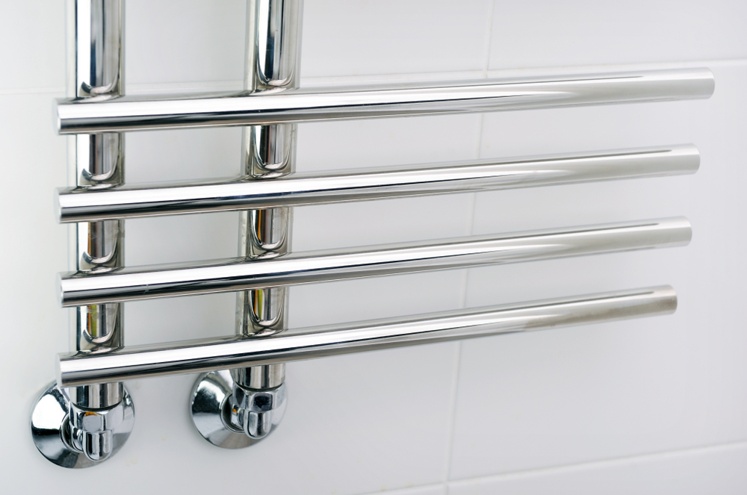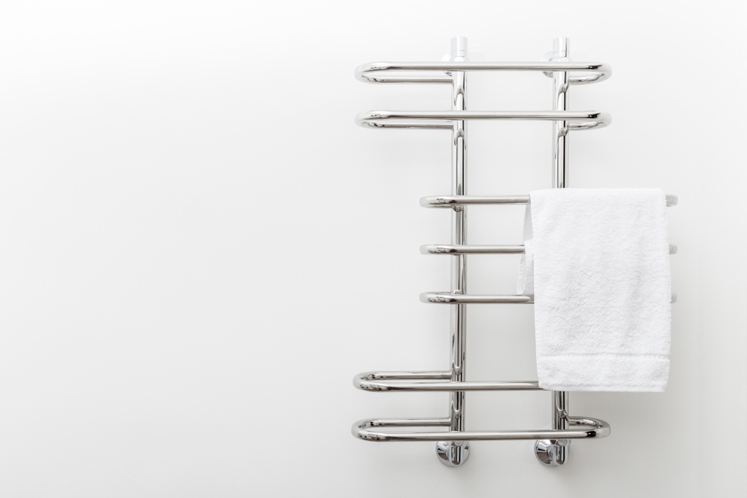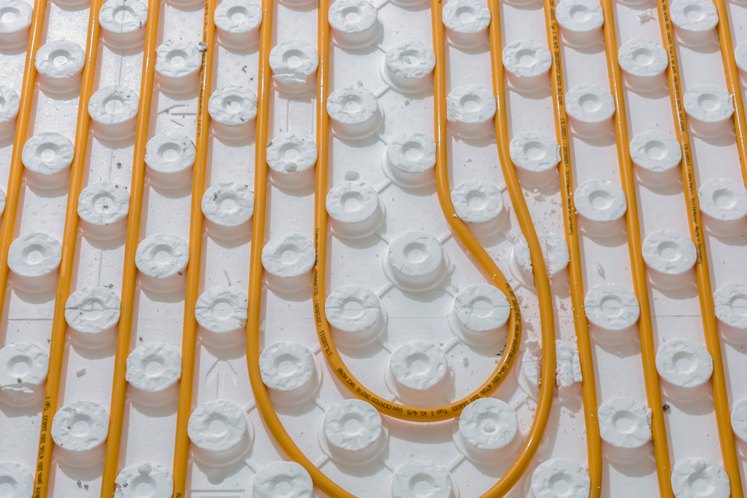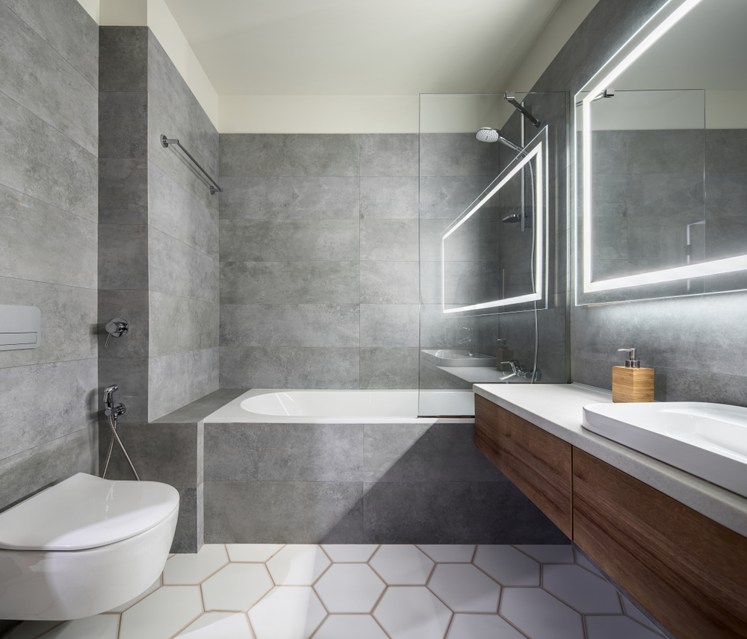There are few things better in life than a warm bathroom. The last thing anyone wants is to step into the shower on a cold winter’s morning and come out feeling like an ice cube. But the big question is: how should you warm your bathroom space and what are the different bathroom heating options available?
Choosing bathroom heating has is just as important as deciding which type of shower to buy or deciding on décor. Over the years, there has been a growth in the number of heating options available, other than a heated towel rail or the humble rectangular radiator. In fact, today, there are four types of bathroom heating available, all of which help to cater for a variety of bathroom styles and floor plans.
Read on in this bathroom heating guide to find out all about the bathroom heating options available and which one is right for your bathroom space.
Why is bathroom heating so important?
The bathroom is unlike any other room in your home as it has a high amount of heat and humidity, but it is much damper and smaller than other spaces. Each of these factors result in the bathroom requiring specific heating needs, such as purchasing a completely different heater, which can be heated via the central heating or electricity supply.
But, perhaps most importantly, you should never let your bathroom get too cold as this can result in damp. Damp can lead to a build-up of mould in your bathroom, particularly on walls and tiles, if you do not have the correct ventilation and heating system, so you must bear this in mind when finding the best bathroom heating solution.

Photo credit: LIAL / Shutterstock
The bathroom heating options available:
There are four main types of bathroom heating available to help warm up cold bathrooms. These are:
1. Towel rails
2. Bathroom radiators
3. Underfloor heating
4. Electric heaters
But, before deciding which type of bathroom heater to install, you must take into account the size, shape, style and usage of your space. For instance, for larger bathrooms, consideration of how effective the heater will be across the space should be the focus of attention. On the other hand, for smaller rooms, the best place for the heater which takes up the least space may be the more important factor.
Furthermore, when installing a new bathroom, you must also consider the usage of your bathroom and who is getting the most use out of it. For example, a busy family bathroom will often require a more permanent heating solution than a guest bathroom – especially when there are young children milling around. Don’t forget style too – when choosing a heating option, ensure you are happy with how it looks when sitting among your bathroom furniture and accessories.
1. Bathroom radiators
In many homes, radiators will be positioned in set positions in the bathroom and it may not be worth your time changing this, as it may be too expensive. In this instance, consider how well your current radiator heats the room and then decide what will work best for you. If your current radiator works fine, consider changing the style to fit in line with the rest of your bathroom, such as a panel radiator or a vertical or horizontal radiator option.
2. Towel rails

Photo credit: mariakray / Shutterstock
Towel rails are one of the most popular bathroom heating options for most bathrooms, as not only are they a more practical solution than standard radiators, they are also a stylish addition to any bathroom – large, small or ensuite.
Heated towel rails are often found in modern, minimalist or contemporary bathroom suites, as they are considerably more streamlined and timeless in appearance than standard radiators. However, this is only a viable option if you have free wall space in your bathroom, as depending on the towel rail size you opt for, it may take up a significantly amount of space. Despite this, towel rails offer a great space-saving solution for smaller bathrooms as they’re fixed to the wall and vertical, rather than standing proud off the wall like traditional radiators.
But you may be wondering, is a heated towel rail enough to heat a bathroom? In short, yes. A standard towel rail works universally in all bathroom types and styles and is often more practical than a standard radiator. However, it is worth noting that if you have a particularly large bathroom, you may require another source of heat to warm the entire area.
3. Electric heaters
Most bathroom heaters operate by tapping into your property’s hot water supply – also known as your central heating. But another alternative way of heating your bathroom is by using electricity, such as an electric towel rail or stand-alone heater, to run using your home’s mains electricity. This is sometimes preferred when water bills are a lot of money, as using electricity can save you a considerable amount of money.
Just like a light, electric heaters come fitted with a simple on-off switch, which allows the heat to be standard and on-demand when you need it, such as right before getting into the bath or shower. This may be preferred to conventional radiators where you have to wait for the radiator to heat up first, which is wasteful and potentially expensive.
4. Underfloor heating

Photo credit: Ralf Geithe / Shutterstock
Underfloor heating is often considered a more “luxurious” style of heating and has grown in popularity over the years. This is unsurprising as, after all, nothing comes close to stepping out of a bath or shower onto a warm heated floor.
There are two main types of underfloor heating:
- The ‘dry system’: This uses electrical wiring under the floor
- The ‘wet’ system: This uses hot water to heat the floor via piping fed from your central heating
This option is often preferred as it gently warms up the room, just like a radiator would, but offers a streamlined option, as there is no space-intrusive radiator. More often than not, this method is used in large bathroom spaces where heat output may be limited with a conventional radiator, however depending on the size and layout of your bathroom, underfloor heating can be installed in smaller spaces too – it is worth consulting a professional to find out whether your bathroom space will allow for underfloor heating.
Here are some other things to consider when choosing the right bathroom heating option for your space.
Remember, colours affect temperature…
Everyone knows that darker colours attract more heat, but that doesn’t mean you should splash bathroom walls with a coat of black paint to make your bathroom warmer. Instead, consider toning down your bathroom walls down slightly, instead of bright white or magnolia.

Photo credit: bezikus / Shutterstock
A good example of this is opting for grey paint, as this offers a neutral colour scheme for your bathroom. Alternatively, if you are feeling bold, you may want to consider more abstract colours such as burnt orange or autumnal rouge.
What is a BTU rating?
The BTU (British Thermal Unit) rating measures how much heat a radiator will produce. This is a vitally important point to consider when buying a radiator for your bathroom, particularly when considering its size. Larger bathrooms will, naturally, require a heater with a higher BTU rating so that its output will cover the entire space and perhaps more than one. On the other hand, a smaller bathroom may require just one to heat up the space sufficiently.
This BTU radiator calculator from B&Q is a great way to figure how many radiators you require for your bathroom space, and at which BTU rating.
Don’t forget bathroom ventilation
Did you know that condensation can cause a room to take longer to heat up? Therefore, if you want your bathroom to heat up efficiently, you should consider adding bathroom ventilation. Adding extractor fans or air vents, as well as dehumidifiers and condensation control units are great at reducing any moisture levels in the home.
Feature image credit: Kostenko Maxim / Shutterstock
